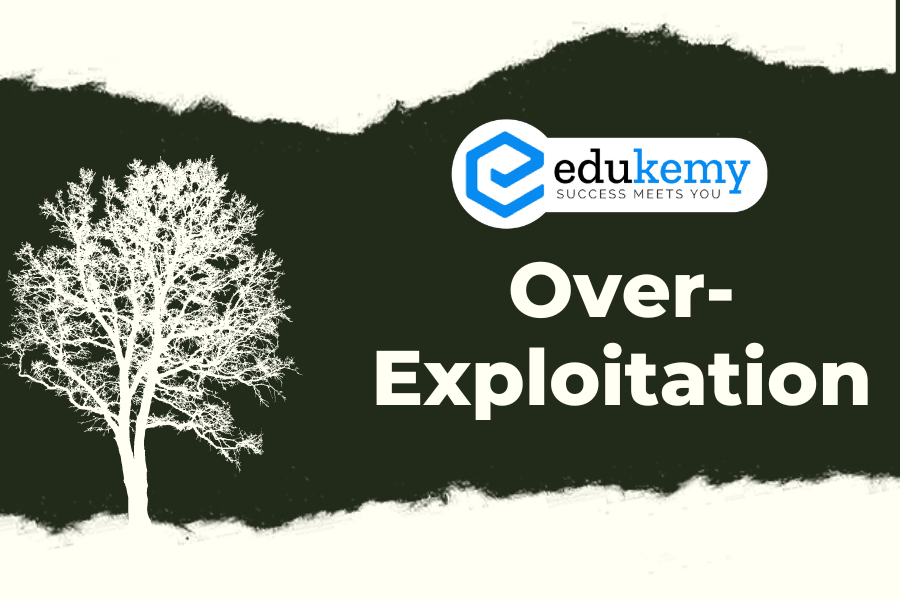- Overexploitation has led to a significant depletion of natural resources that, a millennium ago, seemed inexhaustible but now face severe limitations primarily due to the expanding human population.
- Over the last five centuries, extensive hunting and fishing have resulted in the extinction of various species, such as the Steller’s sea cow and the passenger pigeon.
Contents
- 0.1 IUCN
- 0.2 Biodiversity Loss – Endangered Species:
- 0.3 Biodiversity Loss – Vulnerable Species:
- 0.4 Biodiversity Loss – Rare Species:
- 1 FAQs on Overexploitation:
- 1.1 1. What is overexploitation, and how has it impacted natural resources over time?
- 1.2 2. What are the consequences of overexploitation on biodiversity?
- 1.3 3. How has the human population contributed to overexploitation?
- 1.4 4 What is the IUCN, and what role does it play in conservation?
- 1.5 5. What is the significance of the Red List, and how does it categorize threatened species?
- 2 In case you still have your doubts, contact us on 9811333901.
IUCN
- The IUCN is a global authority that disseminates information on endangered species worldwide through the publication of the Red List of threatened species.
- With a membership exceeding 16,000 scientists and a dedicated staff of over 1,000 individuals, operating voluntarily in more than 50 countries, the IUCN is based in Gland, Switzerland.
- This organization holds observer and consultative status at the United Nations and actively participates in the implementation of various international conventions focused on nature conservation and biodiversity. In pursuit of its conservation goals, the IUCN has classified threatened species of both plants and animals into three distinct categories:
- Indangered Species
- Vulnerable Species
- Rare Species
Biodiversity Loss – Endangered Species:
These species are at a critical risk of extinction. They face a significant threat to their survival, and urgent conservation efforts are needed to prevent their disappearance from the natural world.
Biodiversity Loss – Vulnerable Species:
This category includes species that are likely to face the risk of extinction in the near future if the factors contributing to their endangerment persist. Vulnerability often arises from habitat loss or destruction, and monitoring is crucial as these species may become increasingly threatened. The survival of vulnerable species is not assured, given the substantial decline in their populations.
Biodiversity Loss – Rare Species:
Rare species have very small global populations and are typically confined to specific areas or sparsely distributed over a larger region. Rarity is determined by a species being represented by a limited number of individuals worldwide, usually fewer than 10,000. It’s important to note that a species can be endangered or vulnerable without being classified as rare, particularly if it maintains a large, widely dispersed population.
FAQs on Overexploitation:
1. What is overexploitation, and how has it impacted natural resources over time?
Overexploitation refers to the excessive use or extraction of natural resources beyond sustainable levels. It has led to a significant depletion of resources that, a millennium ago, appeared abundant but now face severe limitations due to the expanding human population. This overuse is particularly evident in extensive hunting and fishing practices over the last five centuries.
2. What are the consequences of overexploitation on biodiversity?
Overexploitation has resulted in the extinction of various species, such as the Steller’s sea cow and the passenger pigeon. It poses a threat to the delicate balance of ecosystems, leading to a loss of biodiversity and disruption of natural processes.
3. How has the human population contributed to overexploitation?
The expanding human population has increased the demand for resources, leading to overhunting, overfishing, and other unsustainable practices. This population growth has accelerated the depletion of natural resources.
4 What is the IUCN, and what role does it play in conservation?
The IUCN, or International Union for Conservation of Nature, is a global authority that provides information on endangered species through publications like the Red List. With over 16,000 scientists and a staff of over 1,000 individuals in more than 50 countries, the IUCN is dedicated to conservation efforts.
5. What is the significance of the Red List, and how does it categorize threatened species?
The Red List is a comprehensive source of information on the conservation status of various species. The IUCN categorizes threatened species into three groups: Endangered, Vulnerable, and Rare, based on the level of risk they face in terms of extinction.
In case you still have your doubts, contact us on 9811333901.
For UPSC Prelims Resources, Click here
For Daily Updates and Study Material:
Join our Telegram Channel – Edukemy for IAS
- 1. Learn through Videos – here
- 2. Be Exam Ready by Practicing Daily MCQs – here
- 3. Daily Newsletter – Get all your Current Affairs Covered – here
- 4. Mains Answer Writing Practice – here

